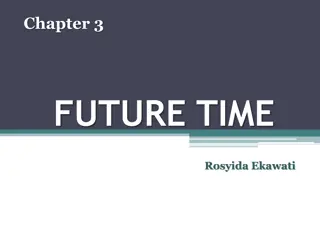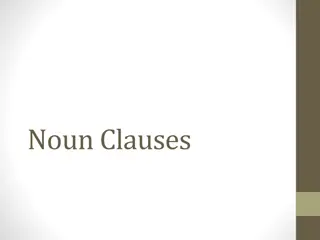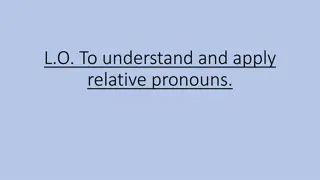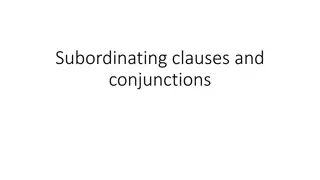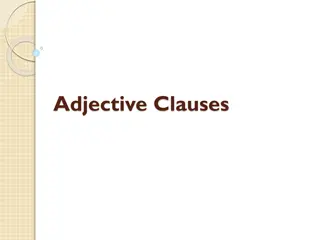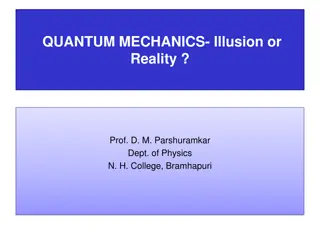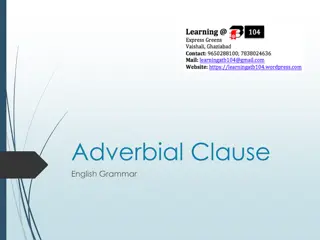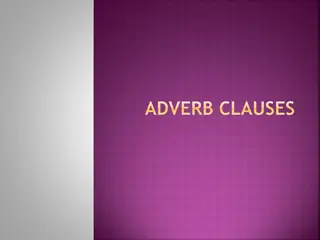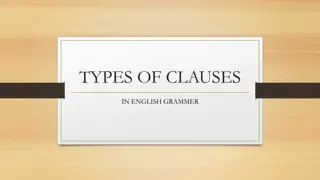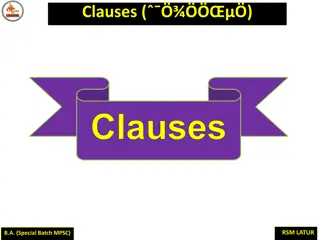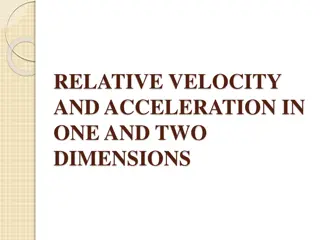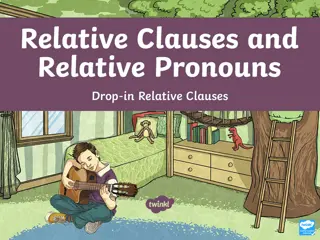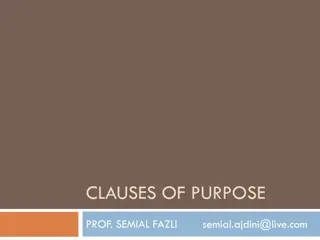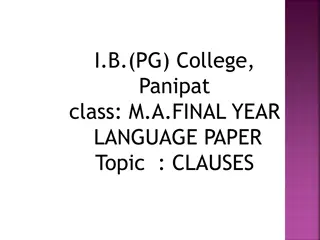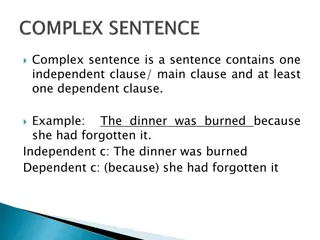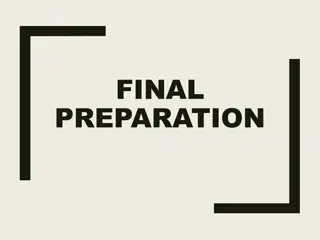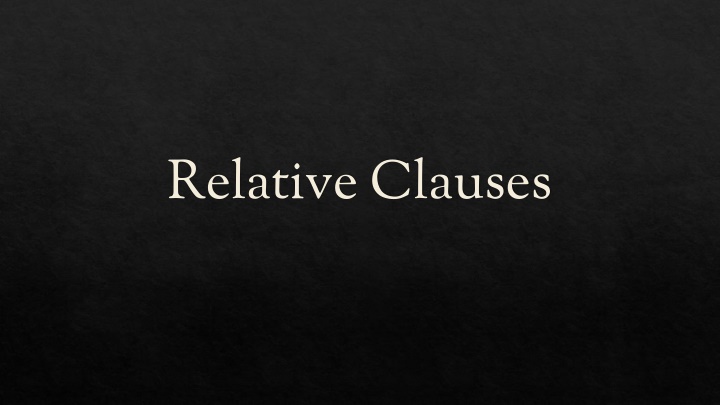
Relative Clauses: Essential vs. Nonessential
Dive into the world of relative clauses, essential and nonessential distinctions, and examples to grasp the nuances of sentence structure with clarity.
Download Presentation

Please find below an Image/Link to download the presentation.
The content on the website is provided AS IS for your information and personal use only. It may not be sold, licensed, or shared on other websites without obtaining consent from the author. If you encounter any issues during the download, it is possible that the publisher has removed the file from their server.
You are allowed to download the files provided on this website for personal or commercial use, subject to the condition that they are used lawfully. All files are the property of their respective owners.
The content on the website is provided AS IS for your information and personal use only. It may not be sold, licensed, or shared on other websites without obtaining consent from the author.
E N D
Presentation Transcript
Clauses Defined A group of words that contains both a subject and a predicate.
Relative Clauses Defined A type of dependent clause Modifies a noun or noun phrase Starts with a relative pronoun: who, whom, whose, which, or that Two types: restrictive (or essential) and nonrestrictive
Restrictive vs Nonrestrictive Clauses Restrictive/Essential: Restrictive/Essential: Limits (or restricts) the identity of the subject of the clause. The content is somehow integral to the essence the subject. ? Starts with that that or who who (if a person); no comma needed Nonrestrictive: Nonrestrictive: Clause that provides interesting (but not integral) information about the subject of the clause. You could remove it without fundamentally altering the meaning of the subject. ? Starts with which which ; comma included before which essenceof
Restrictive Clauses in Action Examples: Students who complete all the assignments will receive extra credit. The seminal research paper that explored the underlying neurological mechanisms of human consciousness has become a foundational text in the field of cognitive science.
Nonrestrictive Clauses in Action Examples: The new restaurant, which is located downtown, is receiving rave reviews. The Baroque cathedral stands as a breathtaking testament to 17th century architectural ingenuity, which is characterized by its intricate gold leaf detailing and soaring domes.
Restrictive vs Nonrestrictive Restrictive: Restrictive: The employees who work remotely requested further training. Nonrestrictive: Nonrestrictive: The employees, who work remotely, requested further training. Restrictive: Restrictive: The article that I found through Business Source Complete served as the baseline for my doctoral study. Nonrestrictive: Nonrestrictive: The article, which I found through Business Source Complete, served as the baseline for my study.
Suggestions for Editing Review all instances of which, who, and that. ? For restrictive/unrestrictive clauses you can ignore pronouns (in which, by which) ? How does the clause that follows which, who, or that modify the subject? Is this information part of the subject itself, or is the information supplemental? ? If the clause is integral to the subject, use that ; remove any comma directly before that unless it has another reason to be there. ? If the clause is not integral to the subject, use which ; add a comma if needed before which. Consider removing entirely if the information is not relevant to the topic or the audience.
Suggestions for Editing (Advanced) Look for sentence fragments and shorter sentences that feature the same noun/pronoun as these could be revised into restrictive or nonrestrictive clauses. Use who/whom instead of which/that for human subjects.
Further Reading Grammar and Mechanics: Relative, Restrictive, and Nonrestrictive Clauses. Walden University, n.d. https://academicguides.waldenu.edu/formandstyle/writing/grammar mechanics/clauses Relative Clauses. The Writing Center at UNC-Chapel Hill, 2021. https://writingcenter.unc.edu/tips-and-tools/relative-clauses/
Attribution Hagstrom-Schmidt, Nicole. "Commas and Coordinating Conjunctions [Lesson]." Strategies, Skills and Models for Student Success in Writing and Reading Comprehension. College Station: Texas A&M University, 2024. This work is licensed with a Creative Commons Attribution 4.0 International License (CC BY 4.0).


